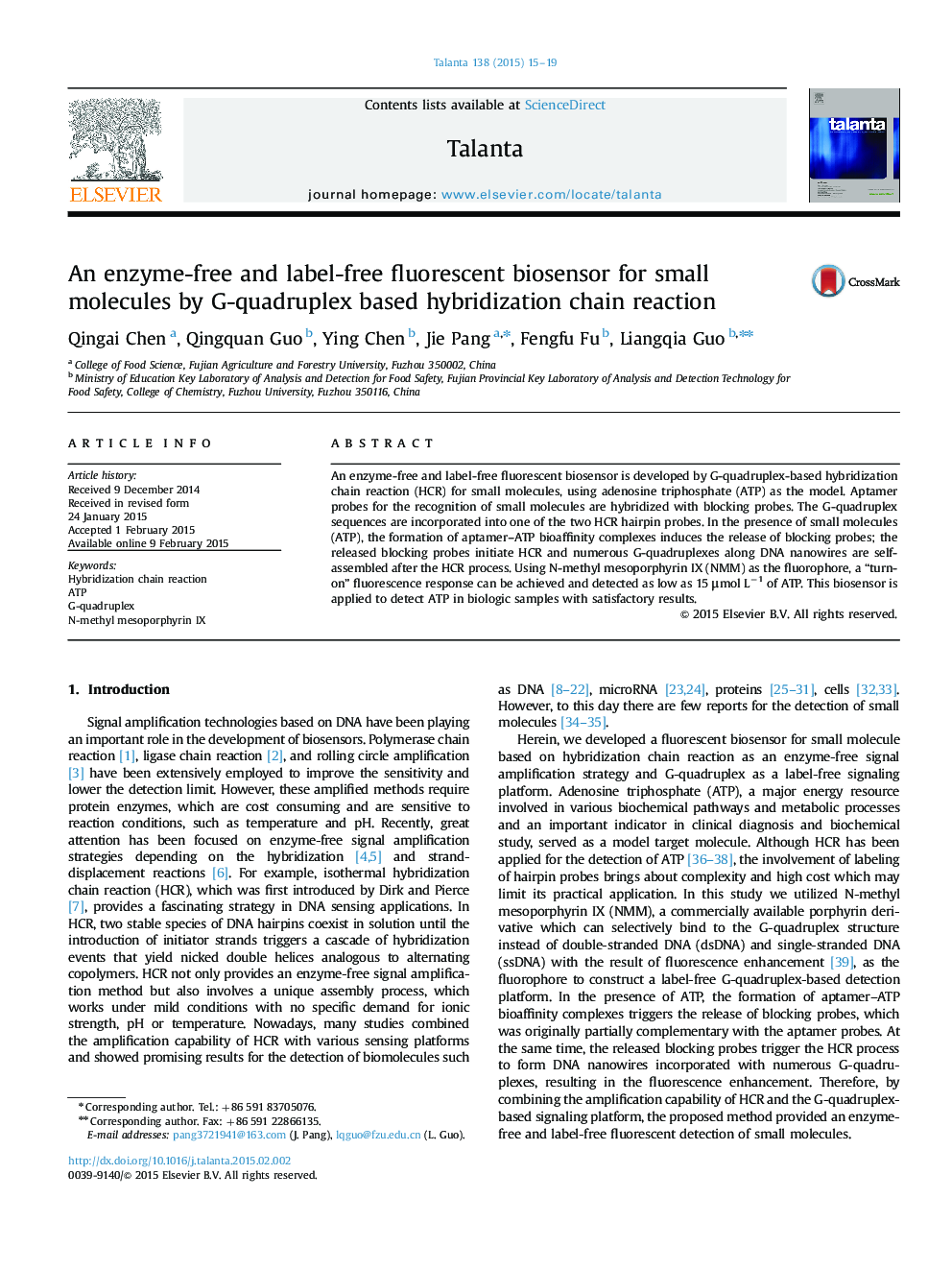| Article ID | Journal | Published Year | Pages | File Type |
|---|---|---|---|---|
| 1243324 | Talanta | 2015 | 5 Pages |
•An enzyme-free and label-free biosensor for small molecules was developed.•DNA nanowires were self-assembled through HCR upon the recognition of targets.•G-quadruplexes bound with NMM were used as a versatile signaling reporter.
An enzyme-free and label-free fluorescent biosensor is developed by G-quadruplex-based hybridization chain reaction (HCR) for small molecules, using adenosine triphosphate (ATP) as the model. Aptamer probes for the recognition of small molecules are hybridized with blocking probes. The G-quadruplex sequences are incorporated into one of the two HCR hairpin probes. In the presence of small molecules (ATP), the formation of aptamer–ATP bioaffinity complexes induces the release of blocking probes; the released blocking probes initiate HCR and numerous G-quadruplexes along DNA nanowires are self-assembled after the HCR process. Using N-methyl mesoporphyrin IX (NMM) as the fluorophore, a “turn-on” fluorescence response can be achieved and detected as low as 15 μmol L−1 of ATP. This biosensor is applied to detect ATP in biologic samples with satisfactory results.
Graphical abstractFigure optionsDownload full-size imageDownload as PowerPoint slide
